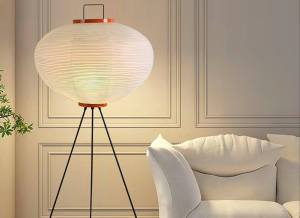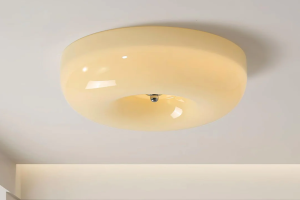
Dual-axis bollard lights represent a significant advancement in outdoor lighting technology, offering a multitude of benefits that cater to both aesthetic and functional needs. One of the primary advantages of these lights is their ability to provide adjustable illumination. Unlike traditional fixed bollard lights, dual-axis models can pivot both vertically and horizontally, allowing for precise control over the direction of light.
This feature is particularly beneficial in environments where lighting requirements may change throughout the day or in response to specific events. For instance, in a park setting, the ability to adjust the light direction can enhance visibility on pathways during evening hours while also illuminating gathering areas for events or activities. Moreover, dual-axis bollard lights contribute to energy efficiency.
Many modern designs incorporate LED technology, which not only consumes less power but also has a longer lifespan compared to traditional incandescent bulbs. This combination of adjustability and energy efficiency means that property owners can reduce their energy bills while maintaining optimal lighting conditions. Additionally, the longevity of LED bulbs minimizes the need for frequent replacements, further reducing maintenance costs and environmental impact.
The integration of smart technology in some models allows for automated adjustments based on ambient light levels, ensuring that energy is used only when necessary.
How Dual-Axis Bollard Lights Can Enhance Safety and Security
Safety and security are paramount concerns in any outdoor space, and dual-axis bollard lights play a crucial role in addressing these issues. By providing targeted illumination, these lights can effectively highlight pathways, entrances, and other critical areas, reducing the risk of accidents and enhancing visibility for pedestrians. For example, in a commercial setting such as a shopping center, strategically placed dual-axis bollard lights can illuminate walkways and parking lots, making it easier for customers to navigate the area safely after dark.
This not only improves the overall experience for visitors but also encourages foot traffic, as well-lit spaces are perceived as more welcoming. In addition to improving visibility, dual-axis bollard lights can also deter criminal activity. Well-lit areas are less attractive to potential intruders, as they increase the likelihood of being seen or caught.
The adjustable nature of these lights allows property owners to focus illumination on specific areas that may be prone to vandalism or theft. For instance, a residential community might use dual-axis bollard lights to illuminate blind spots or secluded corners that are often overlooked. By enhancing visibility in these areas, residents can feel more secure in their surroundings, fostering a sense of community and safety.
Design and Style Options for Dual-Axis Bollard Lights
The design and style options available for dual-axis bollard lights are as varied as the environments in which they can be used. From sleek modern designs to more traditional aesthetics, there is a wide range of choices that can complement any outdoor space. For contemporary settings, minimalist designs with clean lines and geometric shapes can create a sophisticated look while providing effective lighting.
Materials such as stainless steel or aluminum are often used in these designs, offering durability and resistance to weather elements while maintaining an elegant appearance. Conversely, for more rustic or traditional environments, dual-axis bollard lights can be designed with decorative elements that evoke a classic charm. These may include ornate bases or finishes that mimic wrought iron or bronze.
Such designs can enhance the character of parks, gardens, or historical sites while still delivering the functional benefits of adjustable lighting. Furthermore, custom designs are increasingly popular, allowing property owners to tailor bollard lights to fit specific themes or branding requirements. This flexibility in design ensures that dual-axis bollard lights can seamlessly integrate into any outdoor setting.
Installation and Placement Tips for Dual-Axis Bollard Lights
Proper installation and placement of dual-axis bollard lights are essential to maximize their effectiveness and ensure safety. When planning the layout, it is crucial to consider the specific needs of the space. For instance, in a pathway setting, bollard lights should be spaced evenly to provide consistent illumination without creating dark spots.
A common guideline is to place them approximately 6 to 8 feet apart; however, this distance may vary based on the brightness of the bulbs used and the desired level of illumination. Additionally, the height at which dual-axis bollard lights are installed can significantly impact their performance. Typically, these lights are installed at a height of 3 to 4 feet above ground level, which allows for optimal light distribution while minimizing glare for pedestrians.
It is also important to consider the angle of adjustment; positioning the lights at an appropriate angle can enhance visibility without causing discomfort to those passing by. In areas with heavy foot traffic or where safety is a concern, it may be beneficial to focus the light downward to illuminate pathways effectively while reducing light pollution.
Energy Efficiency and Environmental Impact of Dual-Axis Bollard Lights
Energy efficiency is a critical consideration in today’s environmentally conscious society, and dual-axis bollard lights excel in this regard. Many models utilize LED technology, which consumes significantly less energy than traditional lighting options. For example, an LED bulb can produce the same amount of light as a 60-watt incandescent bulb while using only about 10 watts of power.
This reduction in energy consumption not only lowers utility bills but also decreases the overall carbon footprint associated with outdoor lighting. Furthermore, the environmental impact of dual-axis bollard lights extends beyond energy savings. The longevity of LED bulbs means fewer replacements are needed over time, which reduces waste generated from discarded bulbs.
Additionally, many manufacturers are now focusing on sustainable materials for their products, such as recycled metals or eco-friendly finishes. This commitment to sustainability aligns with broader efforts to create greener urban environments and encourages property owners to make responsible choices when it comes to outdoor lighting.
Maintenance and Care for Dual-Axis Bollard Lights
Maintaining dual-axis bollard lights is essential for ensuring their longevity and optimal performance. Regular cleaning is one of the simplest yet most effective ways to care for these fixtures. Dust, dirt, and debris can accumulate on the surface of the lights over time, diminishing their brightness and overall appearance.
A gentle wash with soap and water followed by a thorough rinse is usually sufficient to keep them looking their best. For more stubborn stains or buildup, non-abrasive cleaners should be used to avoid scratching the surface. In addition to cleaning, it is important to periodically check the functionality of the adjustable mechanisms within dual-axis bollard lights.
Over time, these mechanisms may become stiff or misaligned due to exposure to weather elements or regular use. Ensuring that they move freely will allow property owners to take full advantage of their adjustable features. If any components appear damaged or worn out, timely repairs or replacements should be made to prevent further issues down the line.
Creative Ways to Use Dual-Axis Bollard Lights in Your Outdoor Space
The versatility of dual-axis bollard lights opens up numerous creative possibilities for enhancing outdoor spaces. One innovative application is using these lights to create visual focal points within gardens or landscaped areas. By strategically placing them among plants or along pathways, property owners can highlight specific features such as sculptures or water features while providing functional lighting at night.
The ability to adjust the direction of light allows for dynamic displays that can change with seasons or events. Another creative use involves incorporating dual-axis bollard lights into outdoor seating areas or patios. By directing light toward tables or seating arrangements, these fixtures can create inviting atmospheres for gatherings or dining experiences after sunset.
Additionally, they can be used in commercial settings such as restaurants or cafes to enhance outdoor dining spaces while ensuring safety for patrons navigating between tables and walkways.
Choosing the Right Dual-Axis Bollard Lights for Your Outdoor Space
Selecting the right dual-axis bollard lights requires careful consideration of several factors tailored to individual needs and preferences. First and foremost is determining the purpose of the lighting—whether it’s for safety, aesthetic appeal, or both. Understanding how the space will be used during different times of day can help inform decisions about brightness levels and design styles.
Another critical aspect is evaluating the environmental conditions where the lights will be installed. Areas exposed to harsh weather conditions may require more durable materials and finishes that resist corrosion and fading over time. Additionally, considering energy efficiency ratings and bulb types will ensure that chosen fixtures align with sustainability goals while providing adequate illumination.
Ultimately, choosing dual-axis bollard lights involves balancing functionality with design aesthetics to create an outdoor space that is both safe and visually appealing. By taking into account all these factors—purpose, environment, energy efficiency, and style—property owners can make informed decisions that enhance their outdoor areas effectively.





